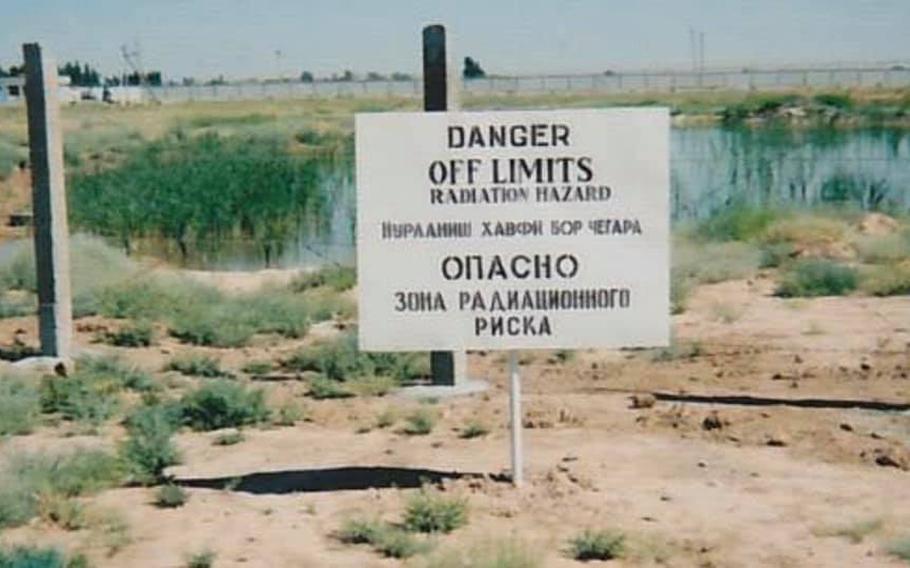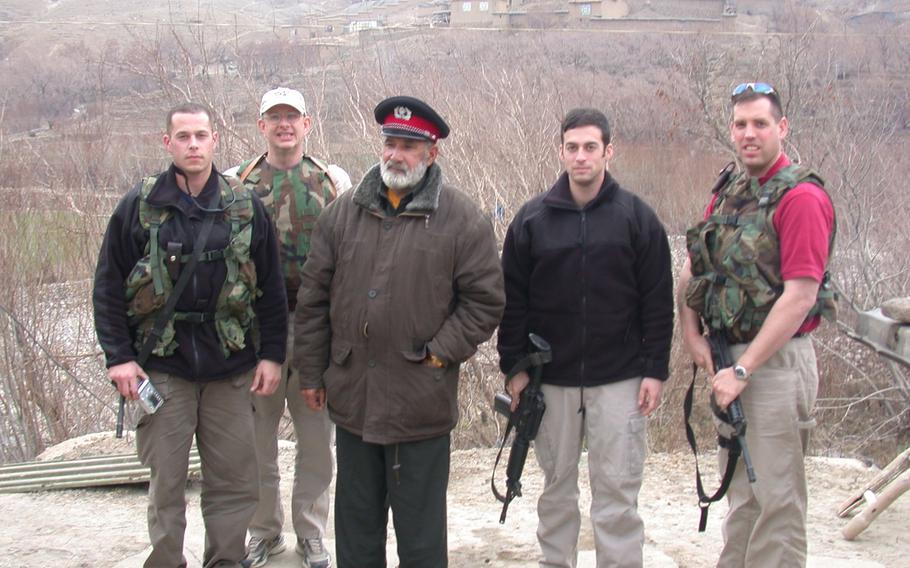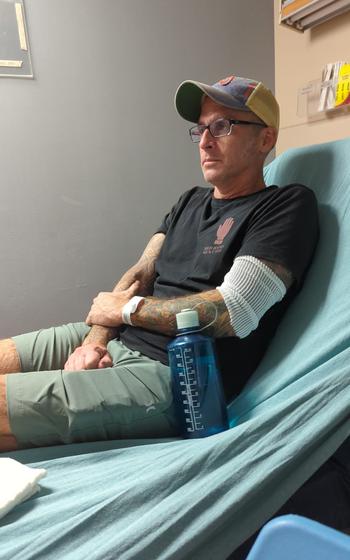
“The second you arrived at K2 you noticed the signs everywhere that said ‘Danger Radiation.’ I remember hearing from the other guys that this place was toxic,” said Mark T. Jackson, a former Army staff sergeant who served at Karshi-Khanabad Air Base in Uzbekistan in 2003 and 2004. Jackson and other K2 veterans have said they often saw chemical residue from old weapons and jet fuel oozing in black pools at the base. (Mark Jackson)
WASHINGTON — Veterans who have suffered debilitating illnesses after exposure to jet fuel, solvents and other environmental hazards while serving at Karshi-Khanabad Air Base in Uzbekistan after Sept. 11, 2001, will be able to receive disability benefits, the Department of Veterans Affairs announced.
The VA said it is taking steps to expand access to disability compensation and other benefits for veterans who served at the base known as K2 that include making “undiagnosed illnesses” and “medically unexplained chronic multi-symptom illness” — also known as Gulf War syndrome — presumptive, qualifying conditions to receive disability benefits.
While the Sgt. 1st Class Heath Robinson Honoring our Promise to Address Comprehensive Toxics Act — also known as the PACT Act — has recognized burn pit exposure at the K2 base, other claims related to exposures to contaminants previously were not upheld.
“This will lower the burden of proof required for veterans who served at K2 to receive presumptive benefits for these conditions,” said Terrence Hayes, the VA press secretary.
But the VA stopped short Monday of saying the agency will recognize and award disability compensation to K2 veterans with claims that their medical conditions are connected to radiation exposure at the Soviet-era air base.
“VA encourages any veterans who believe they have conditions related to radiation exposure to apply for compensation and health care benefits today, and we will do everything in our power to provide them with the care and benefits they deserve,” according to a VA statement. “Many conditions that could be connected to radiation exposure are already considered presumptively related to toxic exposures at K2 and certain other locations, as a part of the 300 conditions in the PACT Act, which lowers the burden of proof for these veterans to become service connected for many cancers and other diseases.”
Hayes said the Defense Department is “the authoritative source for environmental monitoring data” and manages the list of sites with potential radiation exposure risks.
The Defense Department did not comment Monday.
More than 15,000 U.S. service members deployed to the former Soviet air base between 2001 and 2005. The base was a former chemical weapons processing site.

Mark Jackson, a former Army staff sergeant, served at Karshi-Khanabad Air Base in Uzbekistan in 2003 and 2004. Jackson, second from the right wearing a black jacket, is shown during a 2004 deployment to Afghanistan. (Mark Jackson)
“I’ve been demanding complete, comprehensive and automatic coverage for all K2 veterans — and an admission that there was radiation at that site. Until that time comes, I will consider this task incomplete,” said Mark T. Jackson, a K2 veteran who is a board member of the Stronghold Freedom Foundation, which advocates for veterans who served at the base.
Jackson, a former Army staff sergeant, served in the military from 1997-2005 and at K2 in 2003 and 2004.
“The second you arrived at K2 you noticed the signs everywhere that said ‘Danger Radiation.’ I remember hearing from the other guys that this place was toxic,” he said.
Jackson, along with other K2 veterans, have said they often saw chemical residue from old weapons and jet fuel oozing in black pools at the base.
“It was a rancid stew that would burn your eyes,” he said.
After leaving the military at age 27, Jackson said he began suffering a myriad of unexplained health problems that continue today. They include severe osteoporosis, anemia, a nonfunctioning thyroid gland and frequent infections that have led to sepsis and multiple hospital stays.

Mark Jackson, a 47-year-old Army veteran, said he has experienced health problems, including unexplained infections that have led to sepsis and multiple hospital stays since serving in 2003 and 2004 at the Karshi-Khanabad Air Base, a former Soviet installation, in Uzbekistan. Jackson is shown at a Florida hospital in 2005 where he was treated for an infection in his elbow. (Mark Jackson)
Jackson, 47, said doctors have told him that his medical problems taken together are highly unusual and could be the result of radiation exposure but that it is inconclusive without documented evidence of exposure.
“Expansion of benefits does not equal or translate to actual coverage. The process is cumbersome, and the burden of proof remains on the veteran or survivor,” said Natalie White, the surviving spouse of Clayton White, a technical sergeant with the Air Force who deployed to K2 immediately after 9/11.
White died at age 41 after suffering multiple illnesses following his deployment, his widow said.
“Chronic multi-symptom illnesses including Gulf War illness have always been at the discretion and up to the individual VA reviewer’s subjective opinion. We have had many veterans apply for benefits only to be denied,” said White, who serves as a deputy director at the Stronghold Freedom Foundation.
The VA said it is working with the Defense Department to identify all the contaminants on the base that included fuels, volatile organic compounds, particulate matter, asbestos and lead-based paint.
The agency also will provide special training to claims processors and examiners who review claims from K2 veterans.
“VA is continuing to evaluate additional ways to support K2 veterans and their survivors — including working with the Department of Defense to conduct research to identify any additional exposures at K2,” Hayes said.
Jackson said the foundation is pleased by the expansion of benefits for K2 veterans, though there is still concern that veterans claims will be reviewed on a case-by-case basis.
Rep. Mark Green, R-Tenn., a retired Army major, described the VA’s expansion of benefits for K2 veterans as “a step in the right direction.”
“We will continue to exercise oversight responsibilities over the VA’s treatment of K2 veterans to ensure they are truly being granted a presumption of care for illnesses resulting from their deployment to K2,” said Green, who introduced legislation this year that identifies multiple medical conditions, including cancers, that are presumed to be caused from toxic exposures at the K2 base.
Hayes said a K2 veteran’s claim will go through an additional review to ensure all relevant information, including exposures, is taken into account before a decision is made.
“Additionally, we are proactively reviewing and analyzing the VA health care and benefits received by those veterans for any trends and working closely with K2 veterans to identify any additional relevant research needs,” he said.